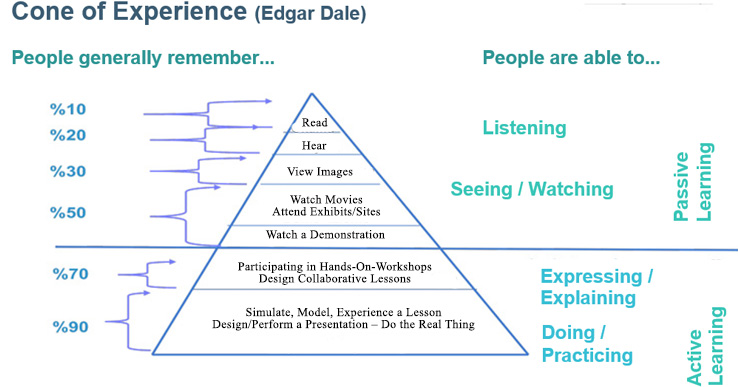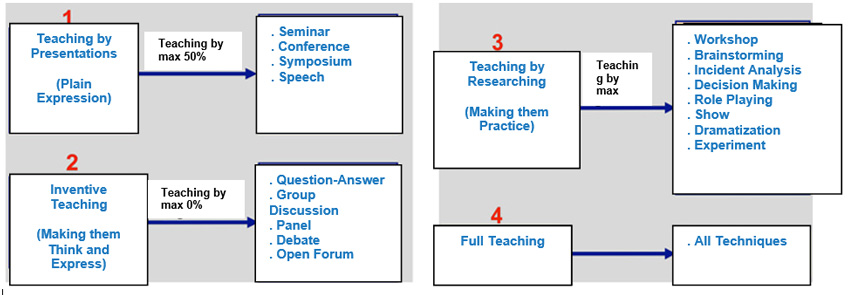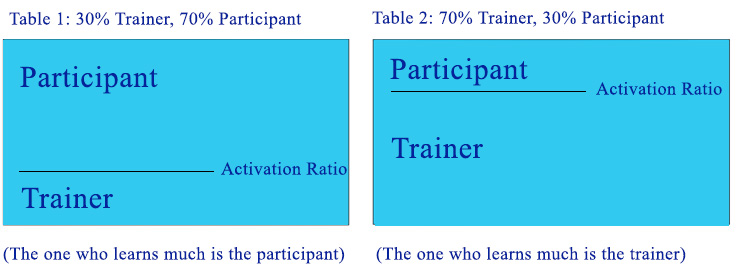Some people think that an effective training is related with the stage/class presentation performance of a trainer only. If the presentation performance of the trainer is good in class, he/she speaks well, if he takes the pulse of audience well, if he ensures them to listen without losing attention, then they think that this is a good trainer. In this case, the participants’ assessment for the trainer is also possible quite high.
Is an effective training that all participants listen to the trainer admirably during training, and leave it saying “Wow, that was cool”?
Or, should we check out how the training has contributed value or gained income to the corporation after the training is finished and the participants start to work?
What are the assessment or evaluation criteria for that? Who does those? Of course, this assessment may also vary much from person to person.
The issue is not simple as that only the presentation performance is good. Now the corporations begin to look out the results, and further pay attention how the money they spend is out.
What are criteria of an effective training? How does it become more productive by teaching? We need to know some educational theories and models in order to understand this.
All behaviorists and education technologists have conducted various studies for many years to find out how a more effective training is done, and developed very valuable methods so far.
When we look at the methods used commonly in teaching techniques, the Cone of Experience developed in 1957 by an American educational technologist Edgar Dale has become a model setting light to use in modern educational methods nowadays.
 In the model developed by Dale, three basic scientific principles which increases/accelerates/facilitates people to learn can be listed as follows:
In the model developed by Dale, three basic scientific principles which increases/accelerates/facilitates people to learn can be listed as follows:
- The more our sense organs joined to learning process are, the better we learn, and the much permanent our learning is.
- The things we learn the best are the ones we learn practicing by our own experience.
- The best learning way is the one that leads from concrete to abstract, and simple to complex.
This model should absolutely be considered while designing training design, preparing documents, and practicing the teaching methods.
Numerous studies set forth findings that validate the Dale's model.
According to these studies, the people (on condition that time is fixed),
- Remember 10% of what they read,
- Remember 20% of what they hear,
- Remember 30% of what they see,
- Remember 50% of both what they see and hear,
- Remember 70% of what they say,
- Remember 90% of both what they do and say.
When we look at the training methods, there are 3 main methods in principle. These methods also support Dale’s the Cone of Experience model.
Teaching Methods and Techniques
Accordingly it comes to the following conclusions with respect to teaching methods and teaching rates:
- If the trainer gives training by making presentations and expressing only by him (Plain expression method) during the training, the maximum rate the participants learn the training does not exceed 50%, no matter the trainer uses many images, has many movie watched, makes many demonstrations.
- If the trainer makes the participants speak, add them to training (asking questions, receiving answers, making them explain etc.) along with the plain expression, makes them explain the subject/what has been explained or makes them repeat (inventive teaching method), then it means that the active learning has begun, and the rate the participants learn the training may rise up to 70%.
- If the trainer makes the participants actively speak, and makes them practice or implement what they have learned along with the plain expression (explorative and interrogative teaching method), then the rate the participants learn the training may rise up to 90%.
- Full teaching is possible by collating all these techniques. If the trainer can use all techniques in the training when required, then it is possible for the participants to learn everything in complete.
The full teaching brings out a question as such:
If we are to teach something, it is not possible to give training by practicing only. The trainer needs to make both plain expression and question-answer. What should be the ratio for that? In other words, how long the trainer should be active, and how long the participants should be active and do something?
Except for the trainings based on regulations and procedures, the trainer and participants activation ratios should ideally be as follows:
30% trainer is active
70% participants are active
This ratio shows an increase towards the trainer in trainings based on regulations (e.g. Law). However, the longer we can keep this ratio in the direction of participants, the much the learning will increase.
Trainer and Participants Activation Ratios
 The more the activation rate (activities such as speaking, practicing etc. in training) in whoever’s favor of, the much the learning side will be. As in Table 2, if the trainer is mostly the active and speaking/practicing side during training, the learning person is the trainer.
The more the activation rate (activities such as speaking, practicing etc. in training) in whoever’s favor of, the much the learning side will be. As in Table 2, if the trainer is mostly the active and speaking/practicing side during training, the learning person is the trainer.
It is important to increase the activation ratio in the participants’ favor as much as possible in order to teach them.
Consequently, to summarize the general principles in an effective training:
- The trainer should not use plain expression method much. He/she should know that if he/she speaks much, the participant's activation reduces, and the learning decreases.
- He/she should pay attention imagery and visual materials.
- He/she should absolutely use the practicing and experiencing teaching methods mainly.
- It should lead from easy to difficult, from known to unknown while preparing the contents.
- The active training ranking of the trainer should be as follows: Express, practice, make them express, make them practice.
- In the training, all sense organs, mostly eye and ear in particular, should be addressed to.
- The much we make the participants express and practice, the much we teach them.
Bayram Ünal
BNB training+consultancy
For further contents, you can send an e-mail to info@bnbconsultancy.com.
...........................................................................................................................................